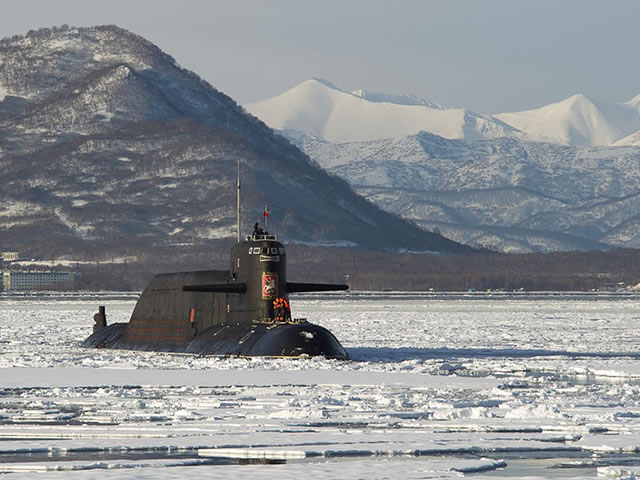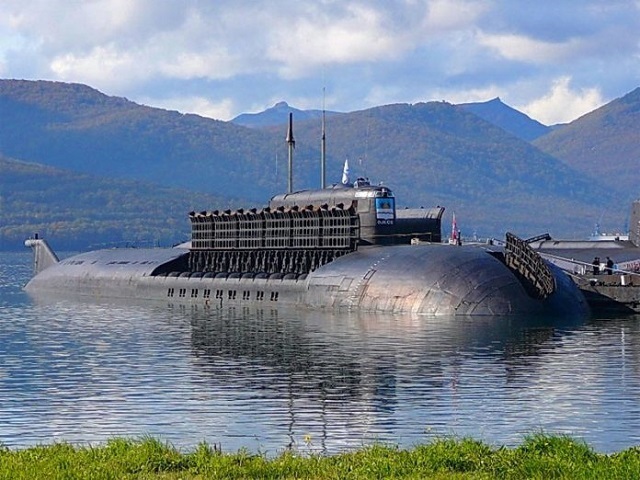|
|
|||
 Russia may well have to decide on replacing the last Soviet-built Project 667BDRM SSBNs with new submarines in order to maintain its existing strike potential. Russia may well have to decide on replacing the last Soviet-built Project 667BDRM SSBNs with new submarines in order to maintain its existing strike potential. |
|||
|
The construction of all these boats was financed under the previous state armament programs for 2006-2015 and 2011-2020 and, according to available data, the continuation of the series depends primarily on political decisions in the sphere of nuclear arms reduction. Given the paralysis of Russian-American relations and very high probability that by February 5, 2021 the START III Treaty will not be extended or replaced by a new agreement, in the early 2020s Russia may well have to decide on replacing the last Soviet-built Project 667BDRM SSBNs with new submarines in order to maintain its existing strike potential.
Now Russia’s submarine fleet includes formally 26 attack submarines of six different projects, half of which are under repair (or awaiting overhaul), while of the other half, according to military experts surveyed by Lentoy.ru, 6 to 8 nuclear-powered boats of Projects 949A, 971, 945 and 671RTMK are actually combat-ready at every moment of time. Such small numbers make it difficult for the Navy to ensure the performance of tasks assigned to attack submarines, be it the protection of their own ballistic missile submarines in the deployment area, tracking of the potential enemy’s SSBNs or following its carrier strike forces. In the next few years, the number of third-generation boats, as well as their diversity, will noticeably decrease - the Navy will have no more than 10 Soviet-built submarines. Most likely, these will be four Project 949A cruise missile submarines modernized with the replacement of the main missile system, and six Project 971 submarines, which also underwent a major upgrade. In addition, six Project 885M Yasen-M-class attack nuclear submarines (SSN), ordered under SAP 2011-2020, will be commissioned between 2018 and 2022 and join the lead ship, K-560 Severodvinsk, transferred to the Navy in 2013. Defense cuts have obviously made the Navy to curb the appetite for modernization. Judging by the available information, the Navy rejected the planned repair and upgrade of the Project 945 Barracuda-class submarines. The decision to dispose of them has not been made yet. However, the very durable titanium hulls of these sturdy submarines and their advanced classmates of Project 945A Condor class, which are currently in service, make it possible to postpone the decision until better times. |
|||
|
|
|||
 Russian Navy submarine Omsk (K-186), a Project 949A SSGN (NATO designation: Oscar II), with all missile hatches opened. Picture via airbase.ru Russian Navy submarine Omsk (K-186), a Project 949A SSGN (NATO designation: Oscar II), with all missile hatches opened. Picture via airbase.ru |
|||
|
The number of Project 971 and 949A submarines to be upgraded was also reduced. It was planned to retrofit 12 boats, six in each project. Now it’s about 8 or 10 units, including four Project 949A and four or six Project 971 boats. The upgraded Project 949A boats will receive a new main missile system: instead of 24 launchers for heavy P-700 anti-ship missiles of the Granit missile system, the modernized Antey will have 72 universal launchers for cruise missiles of various types from the Kalibr and Onyx missile systems. In addition, modernization means almost complete replacement of on-board sonar equipment and electronics for the boats of both projects.
Two Project 949A boats, K-132 Irkutsk and K-442 Chelyabinsk, are already being modernized in the Far East, while two Project 971 submarines, K-461 Volk and K-328 Leopard, are being retrofitted in the north. However, according to experts, the cost of these works is close to the cost of building a new nuclear-powered boat: the Soviet-design submarines were not generally intended for a major upgrade together with service life extension and following 25-30 years in service they were expected to be decommissioned and replaced with new boats. |
|||
|
|
|||
 Russian Navy First Project 885 Yasen-class Submarine Severodvinsk (K-560) underway. Russian Navy First Project 885 Yasen-class Submarine Severodvinsk (K-560) underway. |
|||
|
Anyway, the number of the commissioned attack nuclear submarines, not to mention the number of boats available for combat missions, is estimated as absolutely inadequate. The modernization of 8 to 10 Soviet-era boats, together with the construction of seven Project 885/885M submarines, will give the Navy 15-17 advanced attack nuclear submarines. This will enable 8 to 10 SSNs to be maintained in constant combat readiness, while reducing the difference of design types. However, the Navy needs at least twice as many submarines to accomplish its tasks.
The domestic shipbuilding industry is preparing for the series construction of the next-generation boats. However, the construction of the Project 885M SSNs with some improvements is not ruled out in the next one or two years: the maturity of the project and the reduction of prices for a number of key units, including the main powerplant and armament during the deployment of series production, make the follow-on Project 885M SSNs significantly cheaper compared with the lead hull, whose price exceeded 110 billion rubles in the early 2010s. This makes the order of 2-3 more submarines of this project in 2018-2019 more likely, with the subsequent transition to the construction of a new submarine. © Copyright 2017 TASS. All rights reserved. This material may not be published, broadcast, rewritten or redistributed. |
|||
Future of Russian Navy Submarine Force Within State Armaments Program 2025 - Part 1
- Posted On











